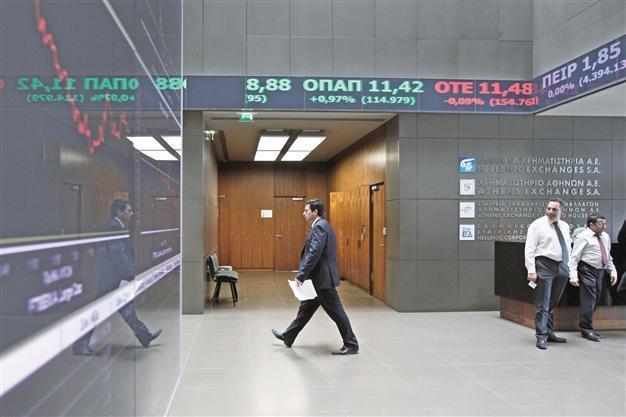Investors crossing back to emerging debt from high yield
LONDON - Reuters

Around $3.5 billion of net flows reached emerging market bond funds in the three weeks to April 16, according to data from Boston-based fund tracker EPFR. REUTERS photo
Investors are switching their attention back to developing countries’ debt after flirting with U.S. and European junk bonds during a year of turbulence in emerging markets.A long sell-off in anticipation of U.S. stimulus withdrawal meant emerging sovereign debt posted negative returns last year but the sector has enjoyed one of its best starts to a year in a decade in 2014, investors say, with returns of 5 percent so far. High-yield debt, meanwhile, is starting to look expensive.
That is helping pique interest in emerging debt among both professional crossover investors, whose mandate enables them to move across asset classes, and volatile retail investors who last year withdrew some $25 billion from the market.
David Ennett, investment director for high yield at Standard Life Investments, said the asset manager had been switching to emerging markets in its strategic bond fund.
“That’s a trade we have been doing in the last two weeks - emerging markets do look a lot cheaper now,” he told a media briefing this week.
Opportunities in emerging markets shine
Recent flows data also show a shift by retail investors towards emerging debt, which has helped drive emerging bond yields lower relative to those on U.S. Treasuries.
Investors fled emerging markets after the Federal Reserve signalled last May that it would cut back the bond-buying that had helped fuel demand for risky assets, with countries that depended on foreign portfolio inflows hit especially hard.
Many switched their cash into global high-yield debt - bonds issued by companies with junk credit ratings - which, as the bulk of such bonds are issued in U.S. markets, offer a yield premium without country risk. Lower default rates and improving credit quality also attracted investors.
Nearly a year later, however, the Fed has started scaling back its stimulus, and emerging markets are considered to have priced in the change.
Although concerns persist about growth and reforms in some emerging economies, fund managers have seen countries such as Turkey, India and Indonesia successfully fighting currency outflows with sharp rises in interest rates.
Around $3.5 billion of net flows reached emerging market bond funds in the three weeks to April 16, according to data from Boston-based fund tracker EPFR, which mainly captures retail investment flows.
That followed almost continuous weeks of outflows this year.
Investors point to potential opportunities such as emerging local currency debt, currently yielding around on average 175 basis points more than U.S. high yield.
But high-yield continues to see positive flows, even if they have fallen, and both high-yield and
emerging market debt markets have seen well-supported new issuance.
















